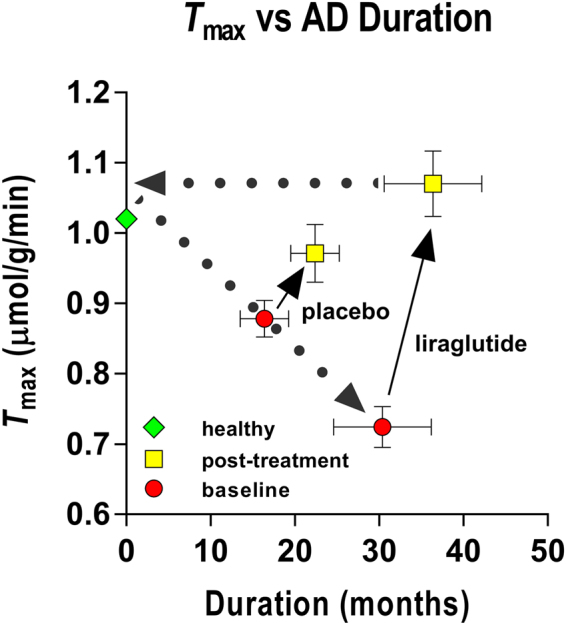Figure 3.

The GLP-1 analog treatment appeared to reduce the effects of disease duration. The results are consistent with the claims (1) that the maximum blood-brain transfer capacity declines with duration of Alzheimer’s disease, and (2) that GLP-1 analog treatment raises the GLUT1 activity in the barrier as a potential future target for treatment of the neurovascular dysfunction in Alzheimer’s disease. Estimates of K t averaged 9.3 mM (± 0.28 RSDR, robust standard deviation of residuals) in the placebo treated group at baseline, 10.1 mM (± 0.19 RSDR) at six months, and 5.9 mM (± 0.18 RSDR) in the liraglutide group at baseline, and 11.1 mM (± 0.25 RSDR) at six months of treatment. The points representing the averages of the healthy control group were not included in the analysis.
